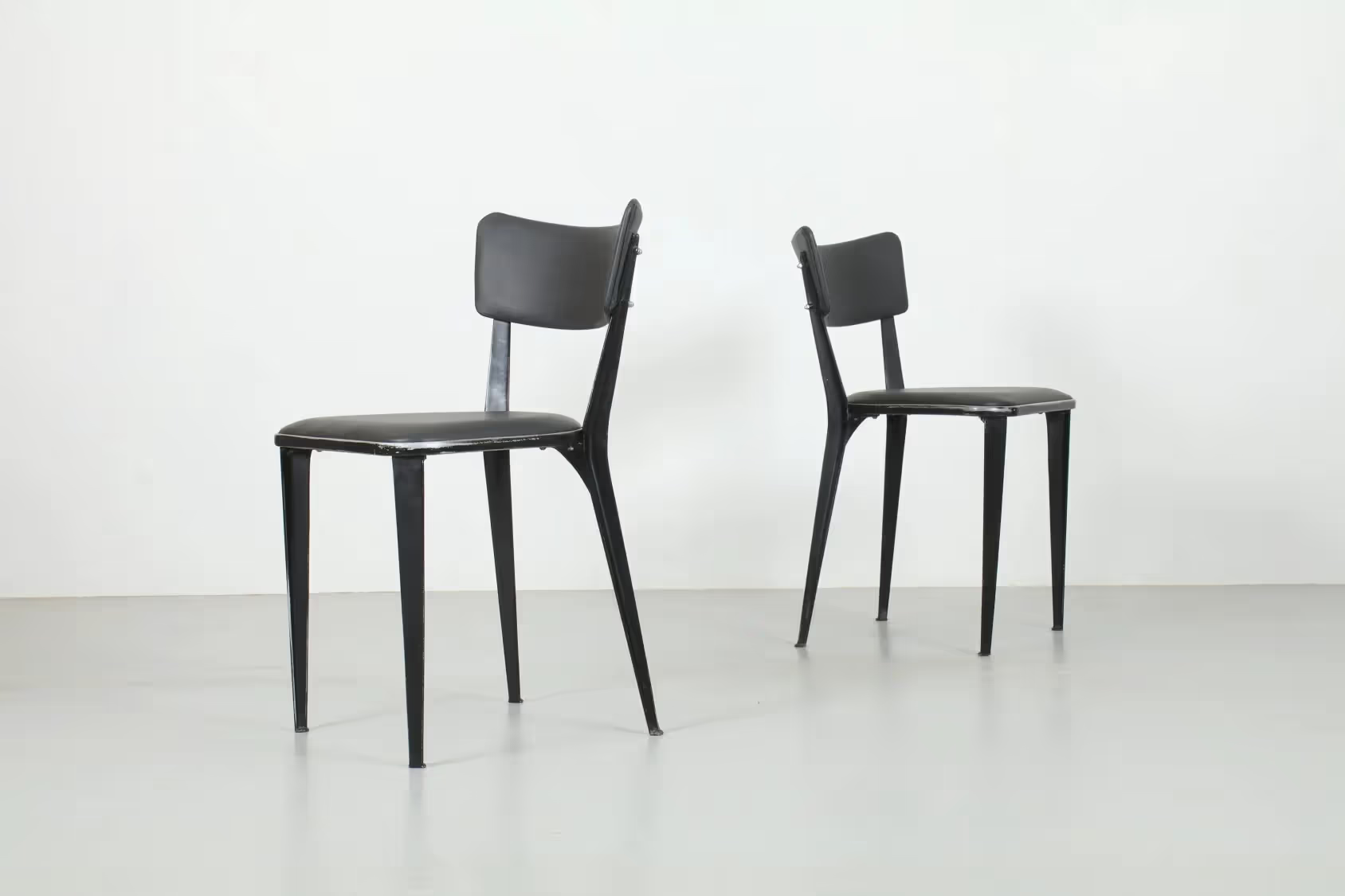Four Iconic Ernest Race 'BA3' Dining Chairs by Race Furniture
After WWII almost all construction materials, especially wood, were in extremely short supply. The British government 'Utility Scheme' of 1942 specified that the use of wood was to be rationed, and any available timber to be directed to the reconstruction of houses.
Not to let the directive prevent good design, Race turned to aluminium scrap metal. This was plentifully available following its use in wartime aeroplane manufacturing. The result was the BA3 chair, thoroughly modern in appearance and construction, utilising technology developed to create bomb casing.
Each piece is checked and carefully hand restored at our Kingsland studio workshop. Our focus is preserving the character and patina of the design while ensuring it displays beautifully in a contemporary interior.
Each piece is checked and carefully restored at our Kingsland studio workshop. Our focus is preserving the character and patina of the design while ensuring it displays beautifully in a contemporary interior.
- Joints checked and reglued
- Timber cleaned and stains removed
- Veneer repairs if needed
- Surfaces polished / refinished
Our full collection is showcased at our Eden Terrace gallery. We have parking available beside the building and would love to see you.
All pieces are available for collection in person from our Eden Terrace gallery. We are also happy to provide a quote for delivery throughout New Zealand.
Please enquire for delivery options.
Four Iconic Ernest Race 'BA3' Dining Chairs by Race Furniture
Note: We showcase a curated edit from the Mr. Bigglesworthy catalogue. Please contact us to view specific items.
Race began his career as a furniture designer by working for engineer J.W. Noel Jordan. Post war rationing meant that wood was hard to come by. Race and Jordan were forced to consider materials which were more readily available, namely: aluminium and steel rods. Race fell in love with these modern alternatives to wood and thus his career as a furniture designer and maker began.
Instead of being overwhelmed by the desperate lack of common materials, Race found that he created some of his best work whilst dealing with the challenges of material scarcity. He embraced metal, eking out the potential of its material properties, to create furniture which could not be replicated in wood, plastic or fabric.
The results are furniture of light and airy quality, which sit in direct contrast to their heavy pre-war equivalents. His designs are brimming with optimism. They are physical examples of the synthesis of pre-war modern thought and post-war contemporary design.

.svg)
.svg)













